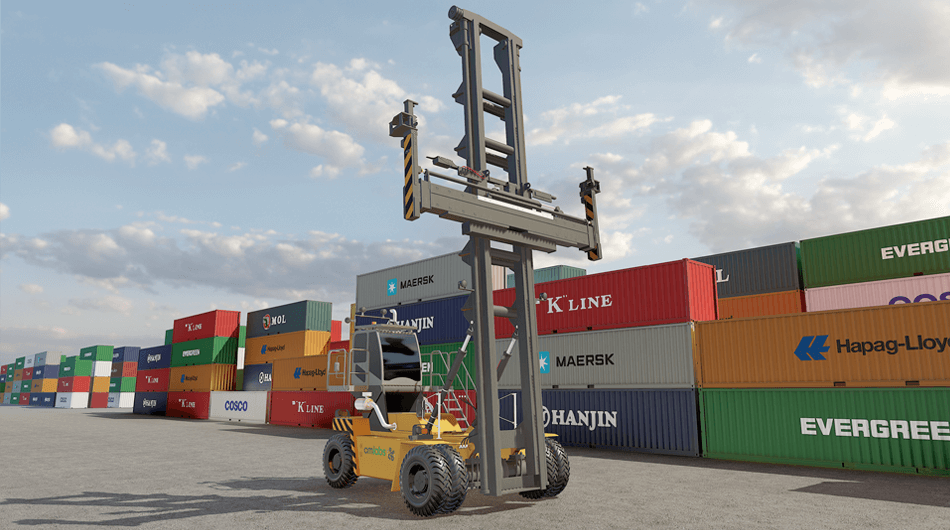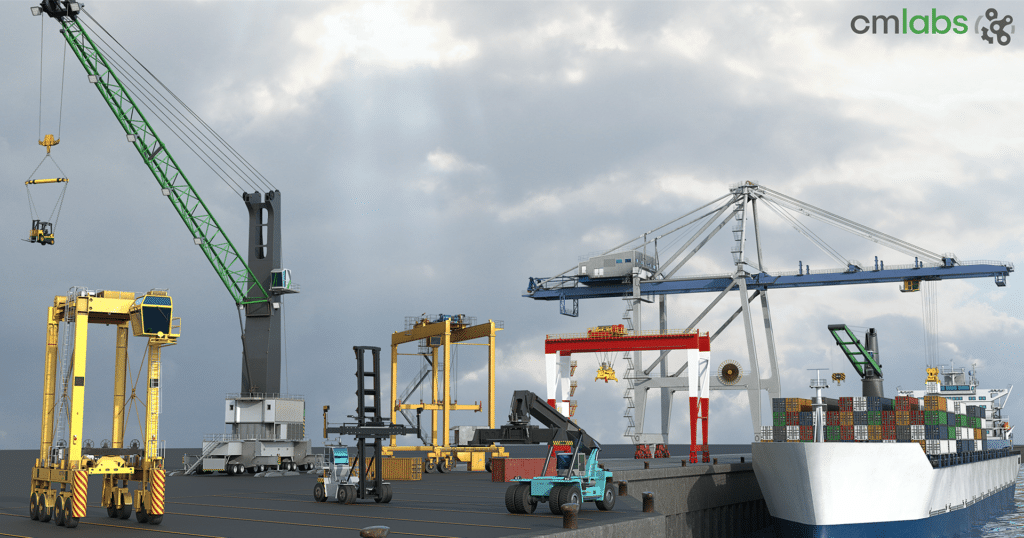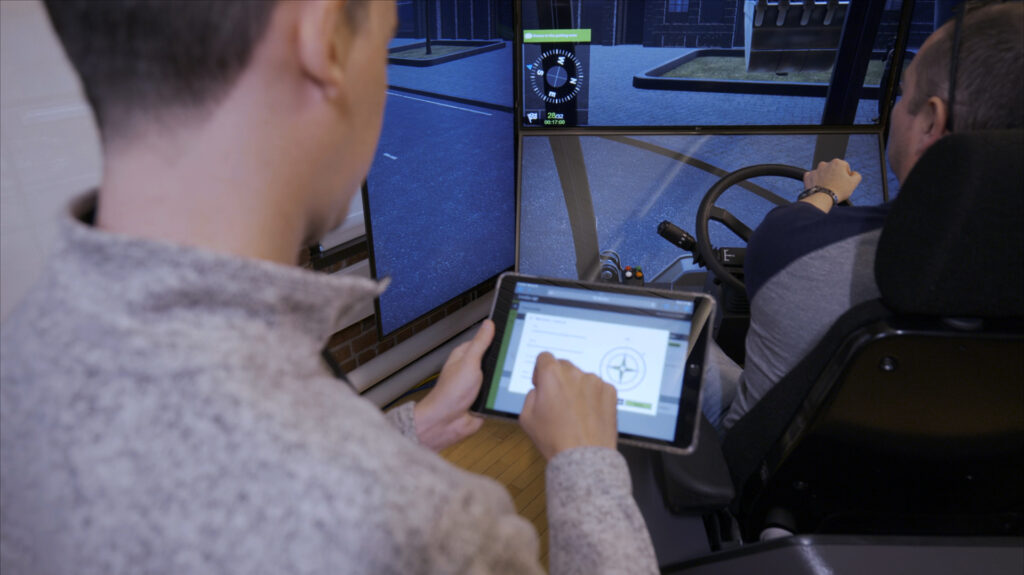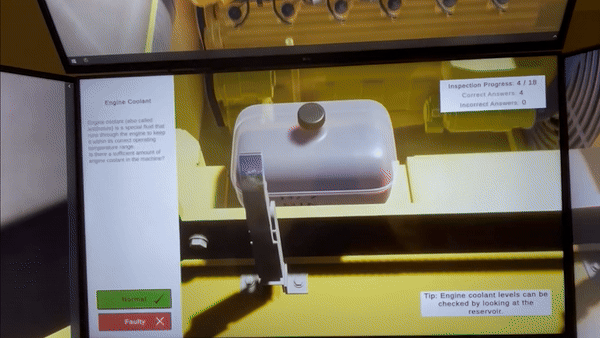A few weeks ago, we hosted a special webinar and discussion, Simulation as a springboard to port terminal growth, led by CM Labs’ Ports Product Manager Elena Shalabanova.
The focus of the discussion was on:
- Port sector growth trends
- Pressure on productivity
- Automation drivers, hurdles, and risks
- Using simulation as a springboard toward:
- greater productivity and safety
- new skills for automation
- data-driven optimization
One of the key takeaways is that port terminals are facing a number of important human capital challenges as a result of increased pressures on productivity (due to competitive drivers as well as long-term economic growth trends):
It turns out that managing these challenges is key to terminal growth, and to explain how, I’ll abstract and expand on some of the points we mentioned during the webinar.
The critical importance of training as a response to trends and the pandemic
Against the backdrop of rising pressures on productivity and the trend toward automation (in spite of the pandemic, or in some cases in response to it), the main contributor to the success of automation and remote operations is human capital.
Historically, some terminals have excluded automation as a strategic future option, partly because they simply do not have the proper skill set in place. This concern is heightened in the context of a pandemic, where robust redundancy planning is necessary in order to avoid placing their operations at risk.
Even for terminals that are making the transition toward automation, events such as COVID-19 highlight the necessity for not just one, but two, three, or more operators having expertise with automated systems — preferably more, in order to assure reliable backup plans. All of this underscores the paramount need for training.
The other consideration in today’s context is that we are seeing shorter term employment contracts. This is particularly relevant as new technologies are introduced to the ports sector. As jobs are shift with the advent of new technologies, it becomes difficult to count on doing or providing the same job over the extended time periods that we were used to seeing in the past.
The result is a need for ongoing employee training and apprenticeship programs: Constant skills upgrading is crucial to coming to terms with new technologies. With opportunities shifting toward engineering and systems monitoring roles, simulation provides an excellent gateway toward greater productivity and safety.
With simulation tools in place, it not only becomes easier and more cost-effective to train, it also becomes much easier for terminals to perform an objective gap analysis of workforce skills. This allows them to adjust training as necessary for a successful transition to automated or semi-automated systems.
This transition can be broadly defined as a sequence of stages from manual operations, to semi-automated operations, to fully automated operations. There are various simulation-based training tools that can assist at each stage.
In an environment where all equipment is operated manually, simulation provides a safe, pressure-free environment for operator training, resulting in improved pass rates as well as shorter time to competency. CM Labs offers a number of training packs that follow the journey of cargo from vessel to yard.
Terminals transitioning toward some automation of processes will benefit from transitioning their training in two stages: 1. Identifying the top-tier operators who can lead the transition and serve as mentors for other operators, and 2. Developing the total workforce to benchmark levels.
To identify top-tier operators, it is helpful to be able to rely on quantitative data relating to metrics around safety as well as efficiency. In this respect, remote simulation tools can help by providing objective data for every training or benchmarking session .
Once these operators have been identified, simulation can be used to upskill other operators in a targeted way that focuses on specific areas to improve.
And finally, terminals that are preparing for an imminent transition to automation can use simulation to provide operators with the new skills required to operate remotely, i.e., without the benefit of the senses normally deployed for effective operations (particularly the seat-of-your-pants sensation of operating manually).
In essence, they are transitioning from their role as manual operator to a role as systems monitor, and simulation is key to helping them prepare for that change.
Simulation-based solutions for remote operations
Simulation-based solutions for remote operations are relatively new to the market (the world’s first real-time remote operating station simulator was recently deployed by CM Labs at Ports of Auckland, in order to prepare trainees for delivery of remote-operated STS cranes). They are already seeing high interest, as while training for current operations is critical, terminals are already providing training in order to prepare for operations of the future.
CM Labs currently offers ROS solutions for STS and RMG simulators, and can connect these to real operating hardware, or emulate the crane control system you will be using. We simulate both basic and advanced automated functionalities.
It’s important to note that beyond the training value, there is clearly a need for good data for business intelligence in order to ensure the best implementation of automation. You need robust, reliable data, which using simulation can help you acquire and consolidate across multiple users and terminals. This will establish a baseline data set and ultimately improve your future processes.
We can also simulate different yard layouts and different automation scenarios, and through our work with OEMs are helping to improve the operator experience and the impact of automation on productivity.
Ultimately, simulation-based training is key to efficient, well-planned growth. To learn more, watch the full webinar on demand here




